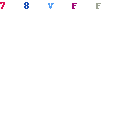I've never watched Only Yesterday before, so I was looking forward to learning why it has 100% on Rotten Tomatoes. This movie is different from what I've watched so far because Isao Takahata directed this movie. From what I remember about the 10 Years with Hayao Miyazaki, Isao Takahata was his artistic rival; he challenged Miyaki with his interesting story-telling choices. From what I've seen so far from Takahata, I agree that he makes interesting choices. I'm basing this off of Gauche the Cellist, Grave of the Fireflies, and Pom Poko. While there are whimsical elements to these stories that appeal to a younger audience, they seem more "adult-oriented."
The story follows Taeko, a career woman that's almost 30 who lives in Tokyo. (Her age and occupation are important because, in Asian culture, we a pressured to get married and have kids before that age.) She decides to go to the countryside to experience life there, she's a city-girl, and harvest safflowers, oddly specific crop. While she journeys there and while she is there, there are many flashbacks to her childhood. This trip and the constant presence of her younger self forces her to reflect on her life: is she satisfied with it, does she want to live in the countryside forever, etc. This all ties back to the Asian expectation I mentioned earlier.
This is a beautiful and evocative film. With every flashback, whether it be about maturing into a woman (getting your period) or even thinking back about one's first love, I strongly related with most, if not all, her experiences. I have to praise Takahata for depicting universal female experiences because it makes the film that much more personal. The art style of these flashbacks is smart too. Since one is recalling distant memories, it makes sense for the details to be a little hazy. The artists did a fantastic job conveying this with the light, pastel, faded, and "unfinished" style, see the above image. Everyone comments on and praises the facial musculature the movie features because it makes the characters more realistic, but I found myself creeped out. The sprawling green, serene, and detailed landscape was beautiful, so it helped me forget this terror. All adults in the present do not look good...
I don't consider this to be the message, but I liked how the movie reminded people to reflect on your life and who you are. Living and working in the city is stressful and overwhelming; because of this, you are only focused on moving to the next thing and not your mental space. Going somewhere quiet to recharge and reflect is beneficial. We're focused on "adulting" that we forget what it's like to be a child, and as the movie shows, it is important to get in touch with your childhood self. Your childhood self knows what they want, and maybe it's what you still want as an adult.
After experiencing the confusion with Kiki's Delivery Service, I appreciated the movie's definite time and location. The film contextualizes the time with pop culture references, cute little anecdotes like trying pineapple for the first time, and fashion. I associate bustling cities with Japan, so it was refreshing to see the countryside and learn about some of the country's history. The short lesson on the safflower pickers was especially powerful because it commented on the economical and social situation in such few words. I am not happy with the romance. I feel as though it's added for the sake of appealing to audiences, and to explain why Taeko ultimately makes that rushed decision at the end of the movie. Why can't she be an older, single working woman in Tokyo? I guess they needed to ground the unconventional elements with conventional ones/these traditional beliefs are hard to break from because it is already ingrained in their thinking.
This is a beautiful and evocative film. With every flashback, whether it be about maturing into a woman (getting your period) or even thinking back about one's first love, I strongly related with most, if not all, her experiences. I have to praise Takahata for depicting universal female experiences because it makes the film that much more personal. The art style of these flashbacks is smart too. Since one is recalling distant memories, it makes sense for the details to be a little hazy. The artists did a fantastic job conveying this with the light, pastel, faded, and "unfinished" style, see the above image. Everyone comments on and praises the facial musculature the movie features because it makes the characters more realistic, but I found myself creeped out. The sprawling green, serene, and detailed landscape was beautiful, so it helped me forget this terror. All adults in the present do not look good...
After experiencing the confusion with Kiki's Delivery Service, I appreciated the movie's definite time and location. The film contextualizes the time with pop culture references, cute little anecdotes like trying pineapple for the first time, and fashion. I associate bustling cities with Japan, so it was refreshing to see the countryside and learn about some of the country's history. The short lesson on the safflower pickers was especially powerful because it commented on the economical and social situation in such few words. I am not happy with the romance. I feel as though it's added for the sake of appealing to audiences, and to explain why Taeko ultimately makes that rushed decision at the end of the movie. Why can't she be an older, single working woman in Tokyo? I guess they needed to ground the unconventional elements with conventional ones/these traditional beliefs are hard to break from because it is already ingrained in their thinking.




No comments:
Post a Comment
Let's discuss!